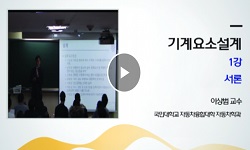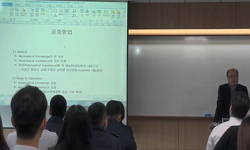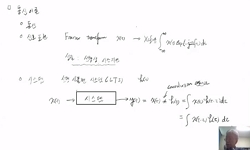본 논문에서는 율곡의 『대학』 공부론을 기반으로 호론과 낙론 학자들이 부념(浮念)과 편념(偏念)에 관한 『대학』 공부론을 어떻게 전개하고 있는지 사상사적 맥락에서 살펴 보았다. 호론...
http://chineseinput.net/에서 pinyin(병음)방식으로 중국어를 변환할 수 있습니다.
변환된 중국어를 복사하여 사용하시면 됩니다.
- 中文 을 입력하시려면 zhongwen을 입력하시고 space를누르시면됩니다.
- 北京 을 입력하시려면 beijing을 입력하시고 space를 누르시면 됩니다.

율곡학파 학자들의 『대학』 공부론 연구 - 부념(浮念)과 편념(偏念)에 관한 호론과 낙론 학자들의 견해를 중심으로 - = A Study on Yulgok School Scholars' Theory to Study “Daehak(大學, Great Learning)”*30) -Focusing on Horon(湖論) and Nakron(洛論) Scholars' Opinions of Bunyeom(浮念) and Pyeonnyeom(偏念)
한글로보기https://www.riss.kr/link?id=A106264046
- 저자
- 발행기관
- 학술지명
- 권호사항
-
발행연도
2019
-
작성언어
-
- 주제어
-
등재정보
KCI등재
-
자료형태
학술저널
-
수록면
43-66(24쪽)
-
KCI 피인용횟수
1
- DOI식별코드
- 제공처
- 소장기관
-
0
상세조회 -
0
다운로드
부가정보
국문 초록 (Abstract)
본 논문에서는 율곡의 『대학』 공부론을 기반으로 호론과 낙론 학자들이 부념(浮念)과 편념(偏念)에 관한 『대학』 공부론을 어떻게 전개하고 있는지 사상사적 맥락에서 살펴 보았다.
호론과 낙론 학자들은 악념을 제거하는 성의 공부 이후에 부념을 다스리는 정심 공부와 편념을 다스리는 수신 공부까지 이루어야 성인의 마음을 온전히 회복할 수 있다고 주장하면서 율곡의 『대학』 공부론을 발전시킨다. 다만, 부념을 다스리는 정심 공부를 정시(靜時)로 보는 호론 학자들의 주장을 낙론 학자들이 비판하면서 『대학』 공부론에 관한 논쟁이 전개된다.
호론 학자들은 대체로 『대학』 정심장에 제시된 성찰의 방식이 동시(動時) 상으로 나아가 사려로 헤아리는 것이 아니라, 부념에 해당하는 네 가지 병통의 기미가 있다는 것을 포착하자마자 그 즉시 놓아버리는 것으로 요약되기 때문에 『대학』의 정심 공부가 마음의 본체를 존양하는 정시(靜時) 상의 공부라고 주장한다. 이에 비해 낙론 학자들은 대체로 『대학』 정심장에서 말하는 심(心)은 마음의 전체를 말하는 것이지 정시(靜時)의 미발심(未發心)에 국한된 것이 아니기 때문에 정심 공부를 동정(動靜)을 겸하는 것이라고 주장한다.
율곡은 부념을 가볍게 비추어보자마자 그 즉시 놓아버리는 공부(輕輕照管·輕輕放退)와 같은 맥락에서 이연평의 미발체인(未發體認) 공부를 논한 바 있다. 이러한 측면에서 보자면, 호론 학자들과 같이 부념을 다스리는 정심 공부를 정시(靜時)의 미발 공부로 분속시켜 볼 수 있을 것이다. 반면에 율곡이 정심 공부를 미발과 이발을 아울러 존양과 성찰을 함께 논한 측면에서 보자면, 낙론 학자들과 같이 정심 공부가 동정(動靜)을 겸하는 것이라고 볼 수도 있을 것이다.
『대학』에도 정시(靜時)의 공부가 있다는 것은 호론이나 낙론 학자들 사이에 이견이 없다. 다만, 호론 학자들이 대체로 『대학』의 정심 공부 자체를 『중용』의 미발 공부로 이해한다면, 낙론 학자들 중에서는 『대학』의 정심 공부가 동시(動時)에 해당하지만 체용일원(體用一源)의 논리에 의해 미발 공부도 포함되어 있다고 보는 차이가 있다. 이처럼 율곡학파 학자들 사이에서 부념을 다스리는 정심 공부와 편념을 다스리는 수신 공부에 관한 문제는 단순하게 부념과 편념을 다스리는 방법론을 제시하는 것에 그치지 않고, 『대학』과 『중용』을 하나의 공부 체계로 이해하는 논의로 발전된다고 하겠다.
다국어 초록 (Multilingual Abstract)
In this thesis, based on Yulgok's theory to study “Daehak”, it was examined how scholars of Horn and Nakron developed the theory to study “Daehak” regarding Bunyeom and Pyeonnyeom in the context of the history of ideas. The scholars of Horon a...
In this thesis, based on Yulgok's theory to study “Daehak”, it was examined how scholars of Horn and Nakron developed the theory to study “Daehak” regarding Bunyeom and Pyeonnyeom in the context of the history of ideas. The scholars of Horon and Nakron developed Yulgok's theory to study "Daehak" arguing that one could fully recover a saint's mind only after studying Seongeui(誠意, sincerity) to get rid of Aknyeom(惡念, an evil intention), Jeongsim(正心, an upright heart) to control Bunyeom, and Susin(修身, moral training) to control study and Pyeonnyeom. Yet, as scholars of Nakron criticized Horon scholars' argument considering the study of Jeongsim to control Bunyeom as Jeongsi(靜時, calm time), the controversy over the theory to study "Daehak" developed.
The scholars of Horon generally insisted that because the method of Seongchal(省察, introspection) suggested in “Jeongsimjang(正心章, Chapter of Upright Heart)” of “Daehak” was not going into Dongsi(動時, dynamic time) and fathoming with Saryeo(思慮, consideration), but releasing it at the very moment of catching the indication of four troubles relevant to Bunyeom, the study on Jeongsim in "Daehak" should be the study of Jeongsi(靜時, calm time) for Jonyang(存養, developing good nature) of the main part of mind. On the other hand, the scholars of Nakron mostly contended that because Sim(心, mind) discussed in “Jeongsimjang” of “Daehak” referred to the whole mind and was not limited to Mibalsim(未發心, mind not manifested yet) of Jeongsi(靜時, calm time), the study on Jeongsim should include Dongjeong(動靜, movements).
Yulgok once commented on Lee Yeon-pyeong(李延平)'s study on Mi-bal-che-in(未發體 認) in the same context of the study methods of release at the very moment of light reflection(輕輕照管·輕輕放退). In this respect, study on Jeongsim to control Bunyeom can be separated and belong to the study on Mibal of Jeongsi(靜時, calm time) as the scholars of Horon did. On the other hand, from the aspect that regarding the study on Jeongsim, Yulgok discussed both Jonyang(存養, developing good nature) and Seongchal(省察, introspection) with Mibal(未發, not manifested) and Yibal(已發, already manifested) together, it seems to have no problem to think of Jeongsim as the study including Dongjeong(動靜, movements).
There were no different opinions between the scholars of Horon and those of Nakron regarding that there was study of Jeongsi(靜時, calm time) in “Daehak”, too. However, while the scholars of Horon usually understood the study of Jeongsim in “Daehak” itself as the study of Mibal in “Jungyong”, some scholars of Nakron thought that even though the study of Jeongsim of “Daehak” corresponded to Dongsi(動時, dynamic time), it included the study on Mibal because of the logic of Che-yong-il-won(體用一源). It can be said that the discussion over the study of Jeongsim to control Bunyeom and the study of Susin to control Pyeonnyeom were not limited to the proposal of the methodology to just control Bunyeom and Pyeonnyeom, but developed into the understanding of “Daehak” and “Jungyong” as one system of study.
참고문헌 (Reference)
1 정연수, "부념(浮念)과 편념(偏念)에 관한 한원진의 『대학(大學)』 공부론 연구" (사)율곡학회 33 : 237-270, 2016
2 민황기, "남당 한원진의 『大學』觀과 인간이해" 유학연구소 29 : 87-110, 2013
3 "靜坐窩先生集"
4 "近齋集"
5 "賁需齋先生文集"
6 "蘿山集"
7 "英宗大王實錄"
8 "渼湖集"
9 정연수, "志·意(念·慮·思)에 관한 율곡(栗谷)의 공부론(工夫論) 연구" (사)율곡학회 32 : 57-86, 2016
10 "弘齋全書"
1 정연수, "부념(浮念)과 편념(偏念)에 관한 한원진의 『대학(大學)』 공부론 연구" (사)율곡학회 33 : 237-270, 2016
2 민황기, "남당 한원진의 『大學』觀과 인간이해" 유학연구소 29 : 87-110, 2013
3 "靜坐窩先生集"
4 "近齋集"
5 "賁需齋先生文集"
6 "蘿山集"
7 "英宗大王實錄"
8 "渼湖集"
9 정연수, "志·意(念·慮·思)에 관한 율곡(栗谷)의 공부론(工夫論) 연구" (사)율곡학회 32 : 57-86, 2016
10 "弘齋全書"
11 "庸齋先生文集"
12 "大學"
13 "南塘集"
14 "中庸"
15 김유곤, "『중용』과 『대학』 해석에 나타난 윤휴의 事天之學의 구조와 성격" 동양철학연구회 (76) : 7-36, 2013
16 정연수, "‘思慮’와 ‘知覺’에 관한 南塘 韓元震의 學說硏究" 한국동양철학회 (36) : 193-225, 2011
동일학술지(권/호) 다른 논문
-
- 충남대학교 유학연구소
- 진성수 ( Chin Sung-su )
- 2019
- KCI등재
-
미수(眉叟) 허목(許穆)의 상서관(尙書觀) - 난(亂)에서 치(治)로의 지향 -
- 충남대학교 유학연구소
- 이은호 ( Lee Eun-ho )
- 2019
- KCI등재
-
한국양명학 연구의 제(諸)문제 - ‘하곡학’에서 ‘한국양명학’으로, 그리고 ‘실학’과 ‘천주교’와의 관계성 및 근대성에 착안하여 -
- 충남대학교 유학연구소
- 김용재 ( Kim Yong-jae )
- 2019
- KCI등재
-
- 충남대학교 유학연구소
- 심순옥 ( Sim Soon-ok )
- 2019
- KCI등재
분석정보
인용정보 인용지수 설명보기
학술지 이력
| 연월일 | 이력구분 | 이력상세 | 등재구분 |
|---|---|---|---|
| 2027 | 평가예정 | 재인증평가 신청대상 (재인증) | |
| 2021-01-01 | 평가 | 등재학술지 유지 (재인증) |  |
| 2018-01-01 | 평가 | 등재학술지 유지 (등재유지) |  |
| 2016-02-12 | 학술지명변경 | 외국어명 : 미등록 -> Studies in Confucianism |  |
| 2015-01-01 | 평가 | 등재학술지 유지 (등재유지) |  |
| 2011-01-01 | 평가 | 등재학술지 선정 (등재후보2차) |  |
| 2010-01-01 | 평가 | 등재후보 1차 PASS (등재후보1차) |  |
| 2008-01-01 | 평가 | 등재후보학술지 선정 (신규평가) |  |
학술지 인용정보
| 기준연도 | WOS-KCI 통합IF(2년) | KCIF(2년) | KCIF(3년) |
|---|---|---|---|
| 2016 | 0.62 | 0.62 | 0.56 |
| KCIF(4년) | KCIF(5년) | 중심성지수(3년) | 즉시성지수 |
| 0.52 | 0.49 | 1.162 | 0.1 |





 KCI
KCI KISS
KISS







